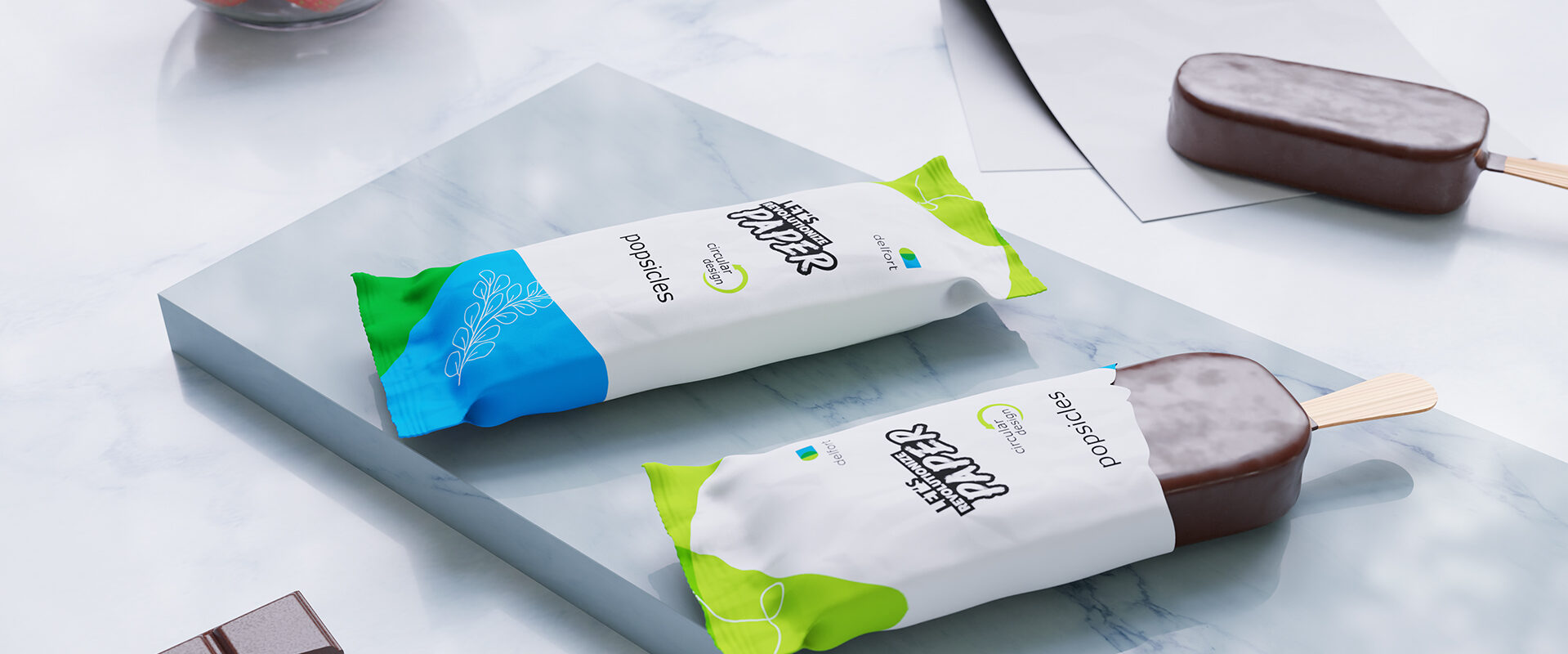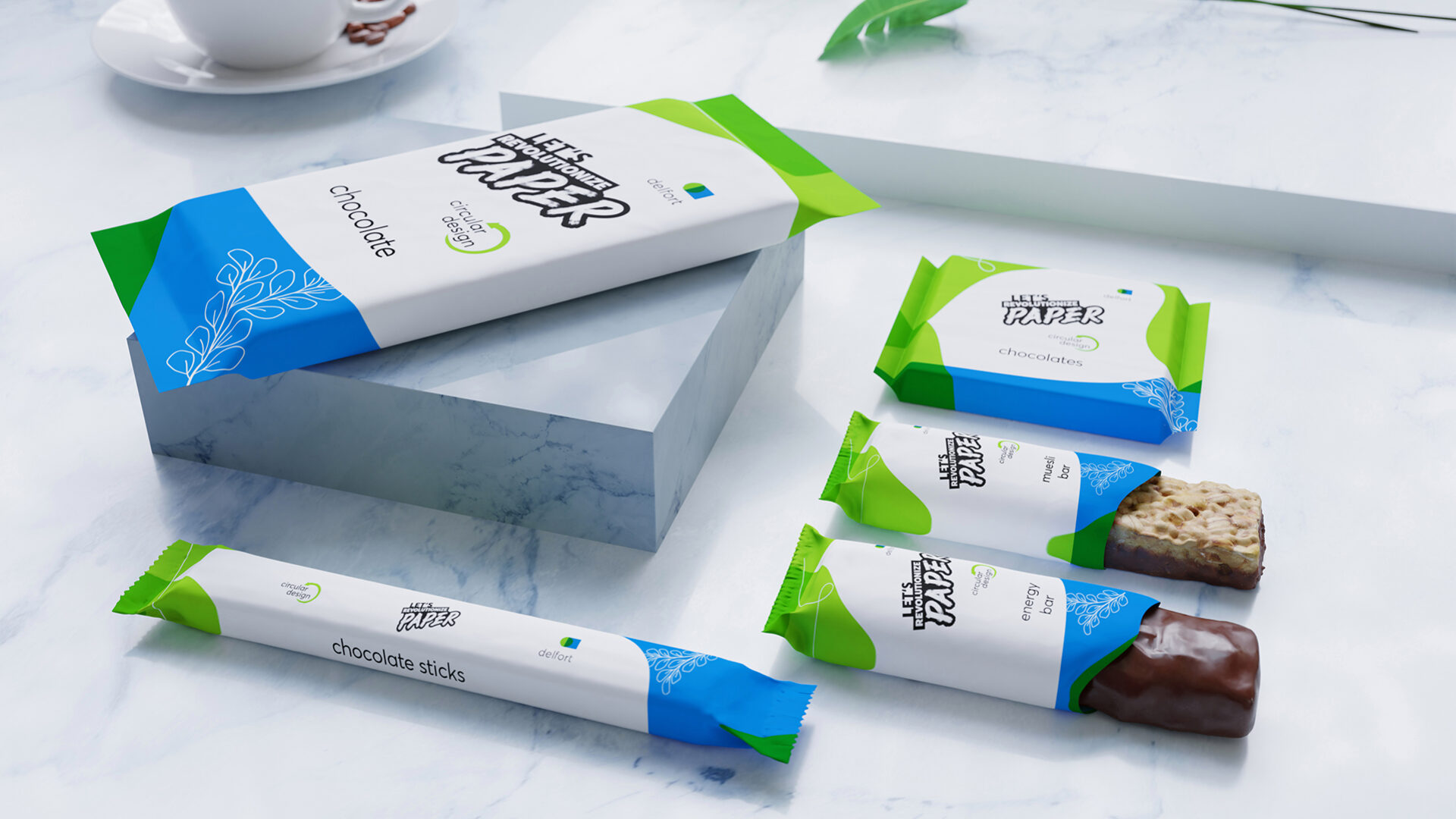
new barrier paper protects against moisture, drying out and loss of aroma
With thinbarrier 302, delfort introduces an exceptionally high-performance barrier paper for heat-sealing and cold-sealing applications for flexible food packaging. “Thanks to a combined oxygen, water vapor and grease barrier, the paper achieves values comparable to commercially available plastic films while being thin and light,” says Peter Hackl, Director of Packaging at delfort. “We are launching a new generation of barrier paper onto the market.”
Target groups include producers of frozen and chilled foods, confectionery, chocolate bars and cereals. “Our new packaging paper weighs just over 60 grams and is therefore currently one of the lightest barrier papers on the market,” says Hackl. thinbarrier 302 can be disposed of in wastepaper and has a very good CEPI recycling score.

Thanks to its improved tensile strength and tear resistance, the paper offers particularly favorable runnability and sealing properties on packaging machines that previously worked with film. “Our product developers have given the new paper a high-performance application profile,” says Hackl. For example, a water vapor barrier of less than 10 grams per square meter per day prevents moisture from penetrating the packaging. “This is important for dry snacks, for example, as they are very sensitive to fluctuations in humidity,” explains Hackl. Conversely, moisture loss from the food is also prevented, meaning that the texture and freshness are retained throughout the entire shelf life. The specially developed barriers also ensure that frozen food does not freeze and freezer burn does not occur.
The oxygen barrier of thinbarrier 302 is lower than that of commercially available plastic monofilms and prevents oxygen from penetrating the packaging: “This preserves the natural flavors and ensures the quality of the food over the shelf life,” says Hackl. At the same time, thinbarrier 302 is naturally free from optical brighteners (OBA) and intentionally added perfluorinated and polyfluorinated chemicals (PFAS). “We have added another functional, sealable barrier paper to our packaging paper range,” says Hackl.

Interested in switching to functional and recyclable barrier paper packaging?
We would love to hear from you! Please don't hesitate to contact us for inquiries, collaborations, or a tour of our Packaging Laboratory.
Peter Hackl, Director of Packaging at delfort
food@delfortgroup.com
this may also be interesting for you
let's talk!
With our specialized expertise and deep knowledge in designing lightweight barrier paper packaging, we're not just your partners we're your catalysts for change, your collaborators in innovation.
Contact us and join the paper revolution today!

